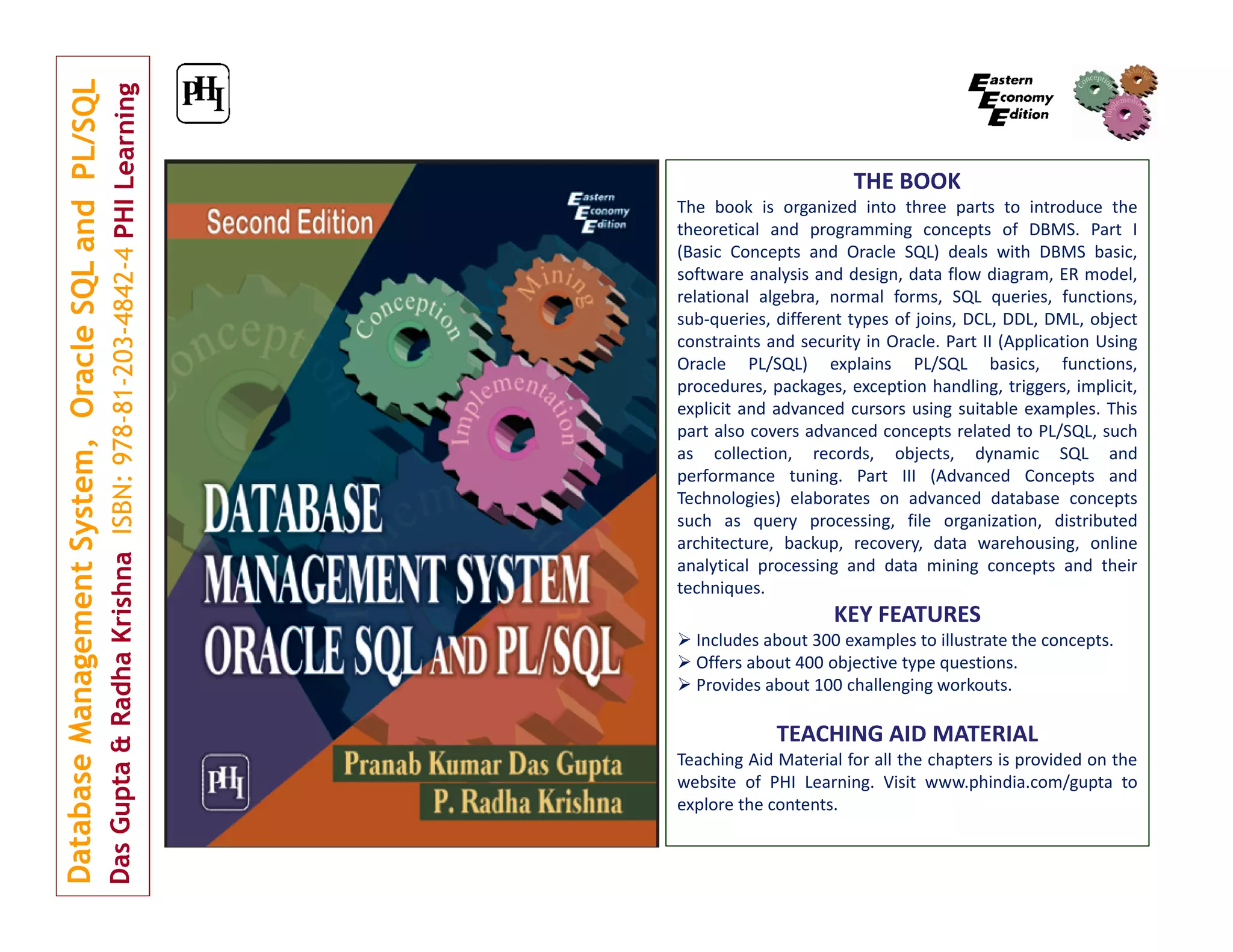This document summarizes chapters from a book on database management systems using Oracle SQL and PL/SQL. It provides an overview of topics covered in each chapter, including query processing, file organization, distributed processing, transaction processing, concurrency control, data warehousing, online analytical processing and data mining techniques. The book is divided into three parts that introduce theoretical and programming concepts. It includes examples, objective questions, and exercises. The authors provide their contact information and invite feedback to improve the book.
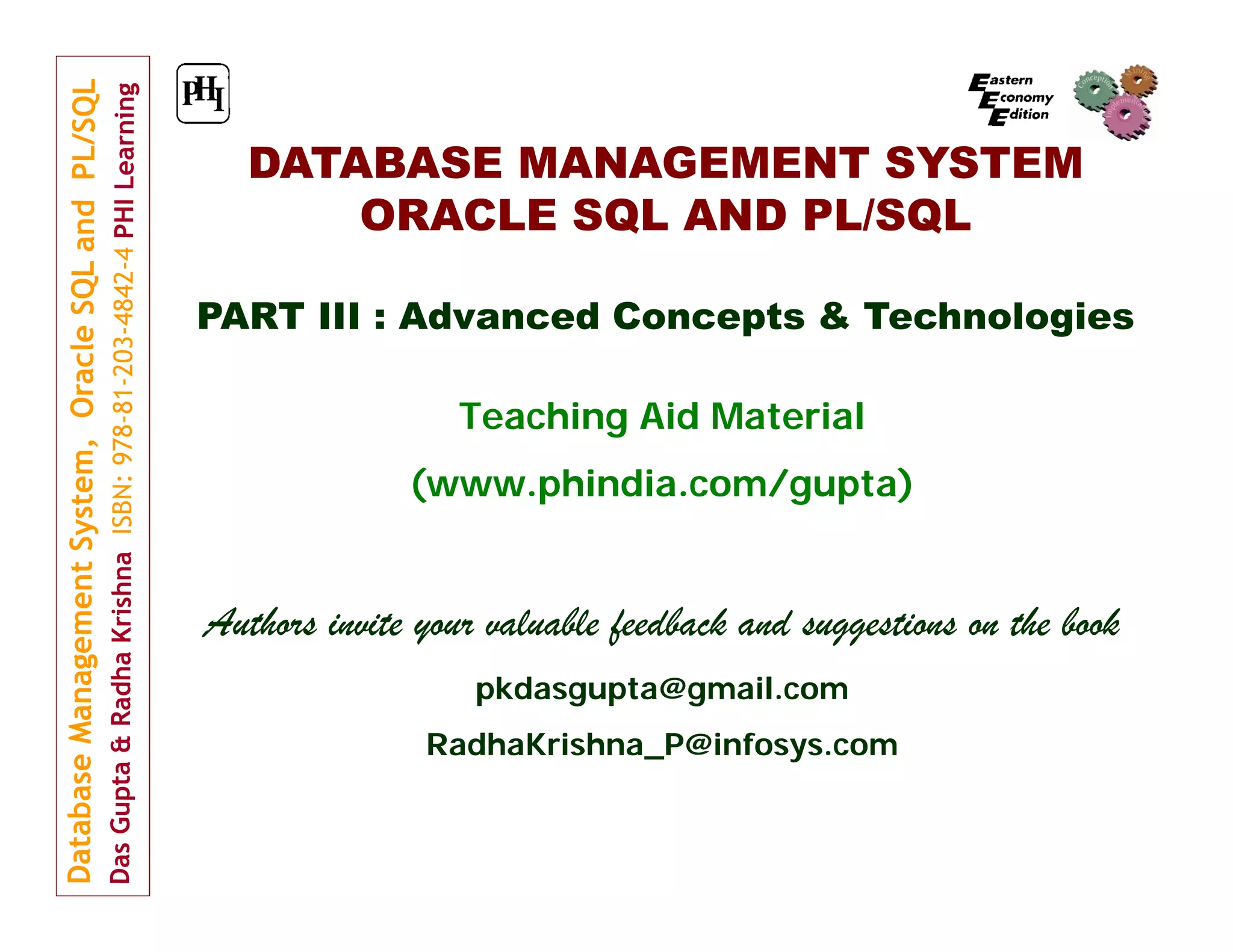

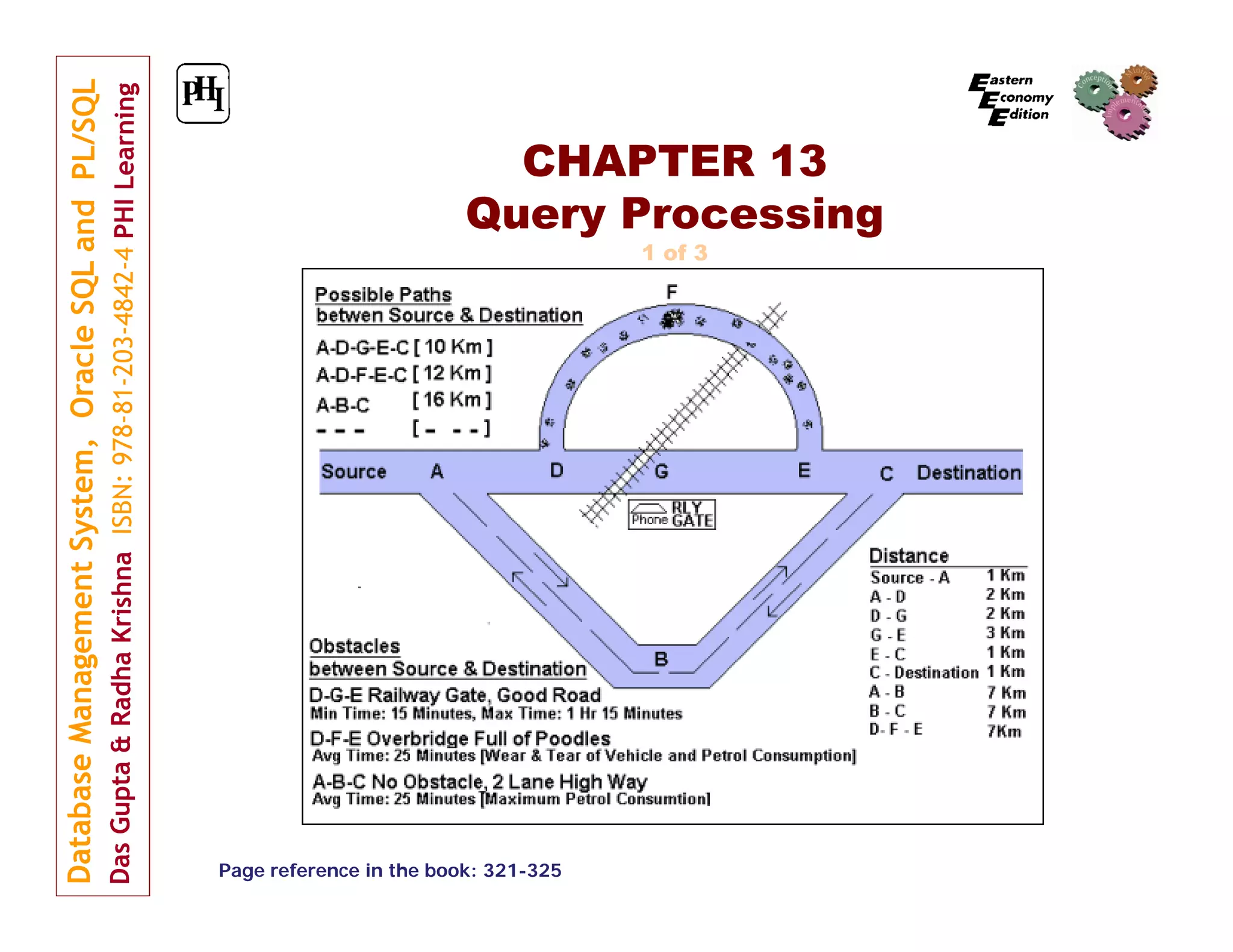
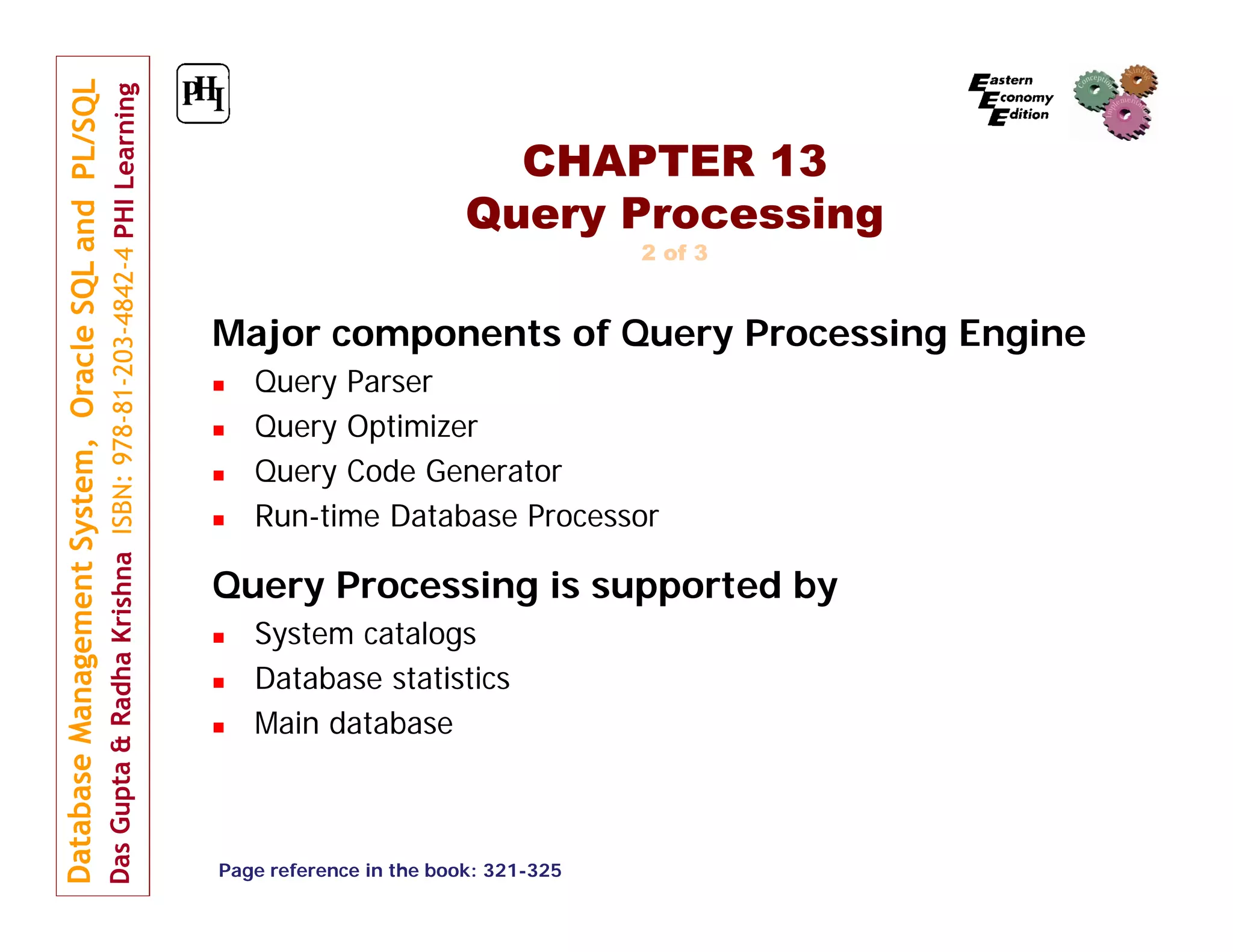

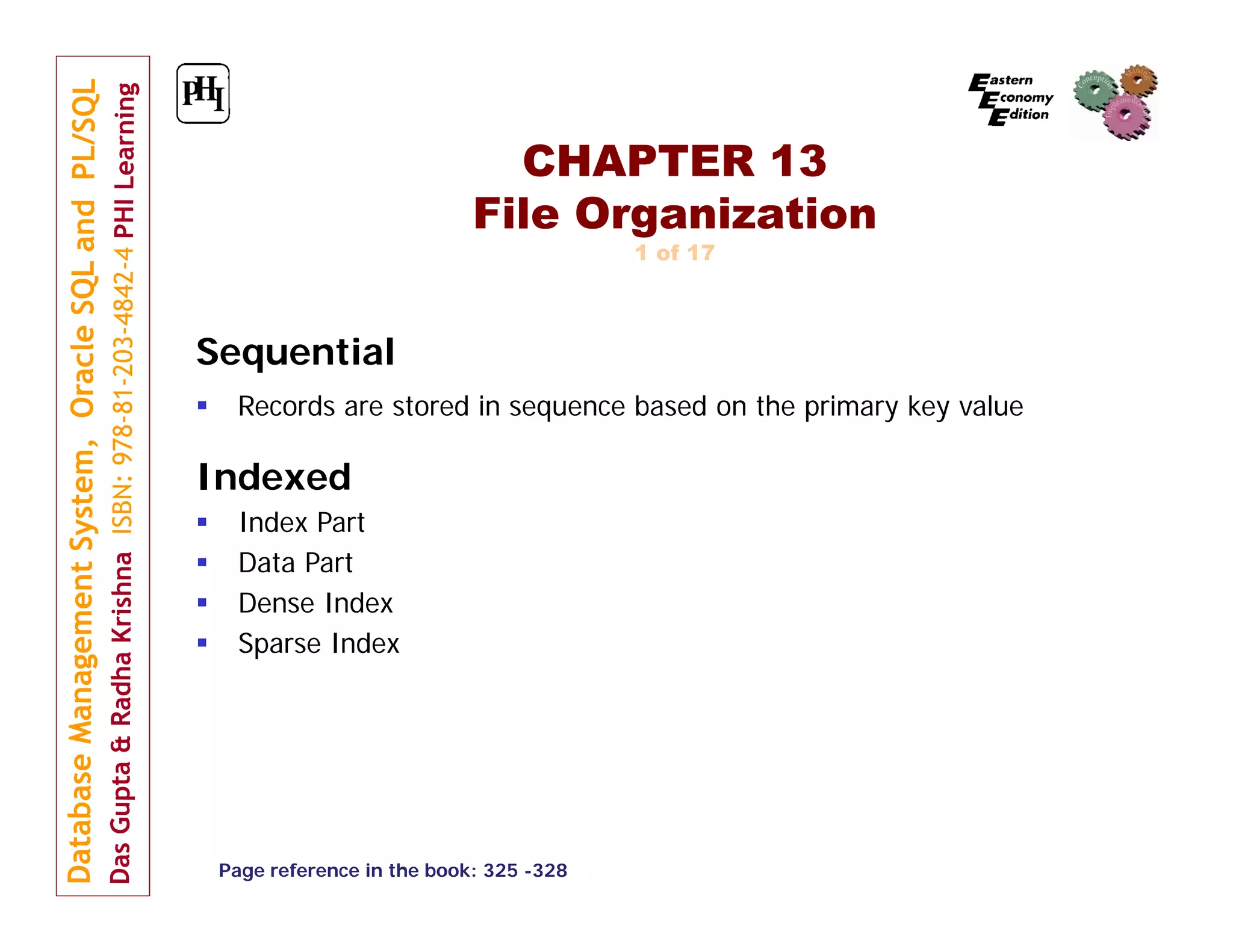
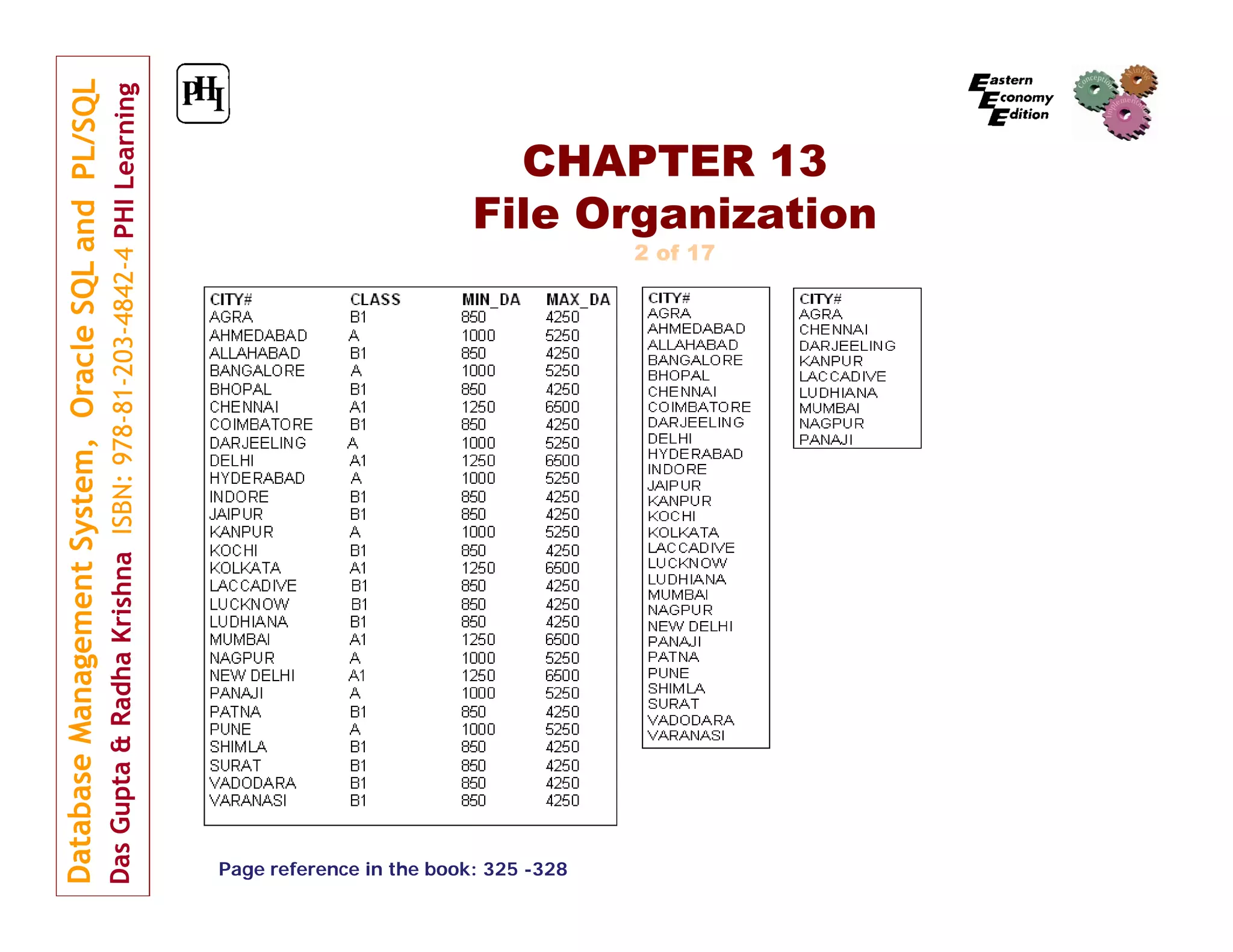

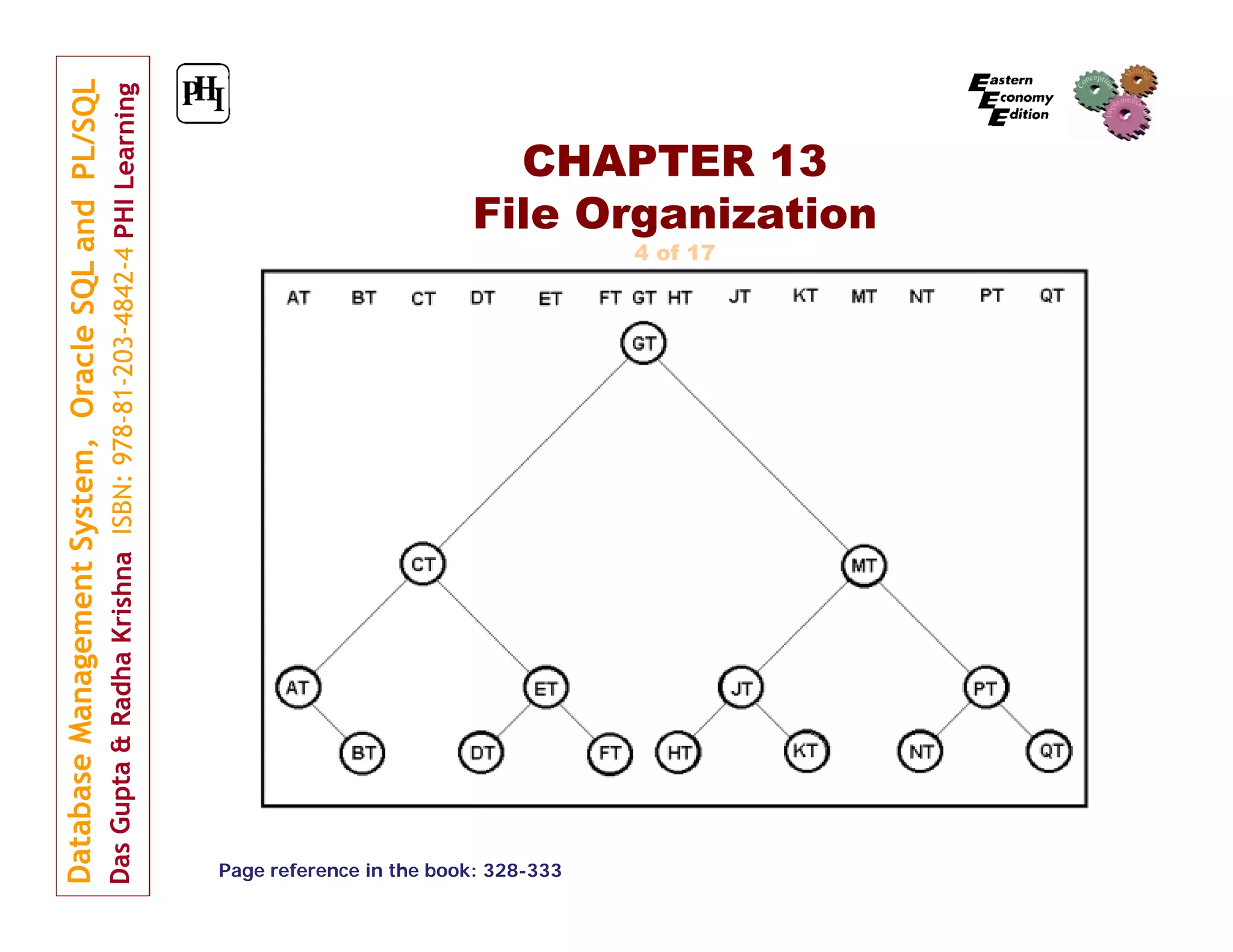
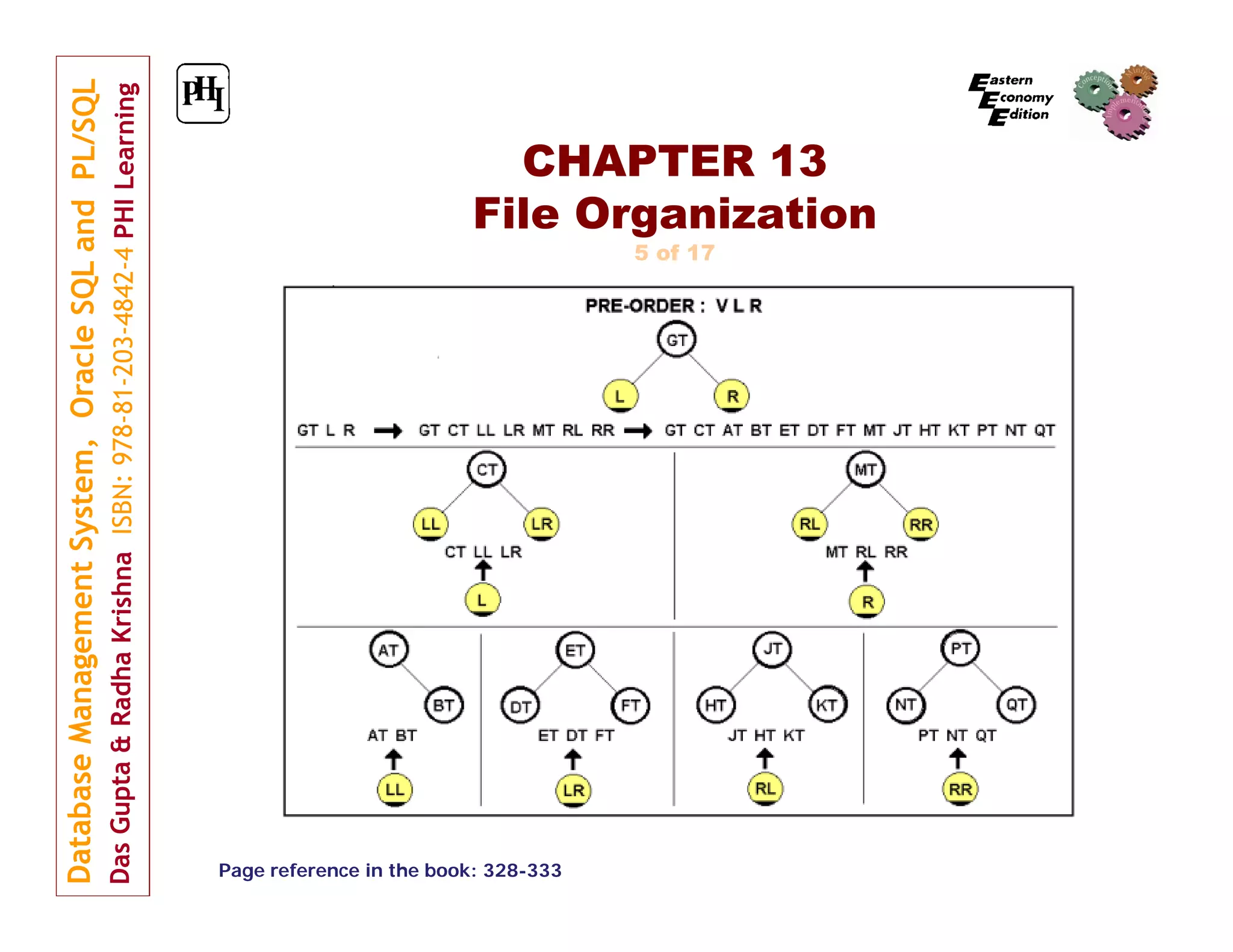
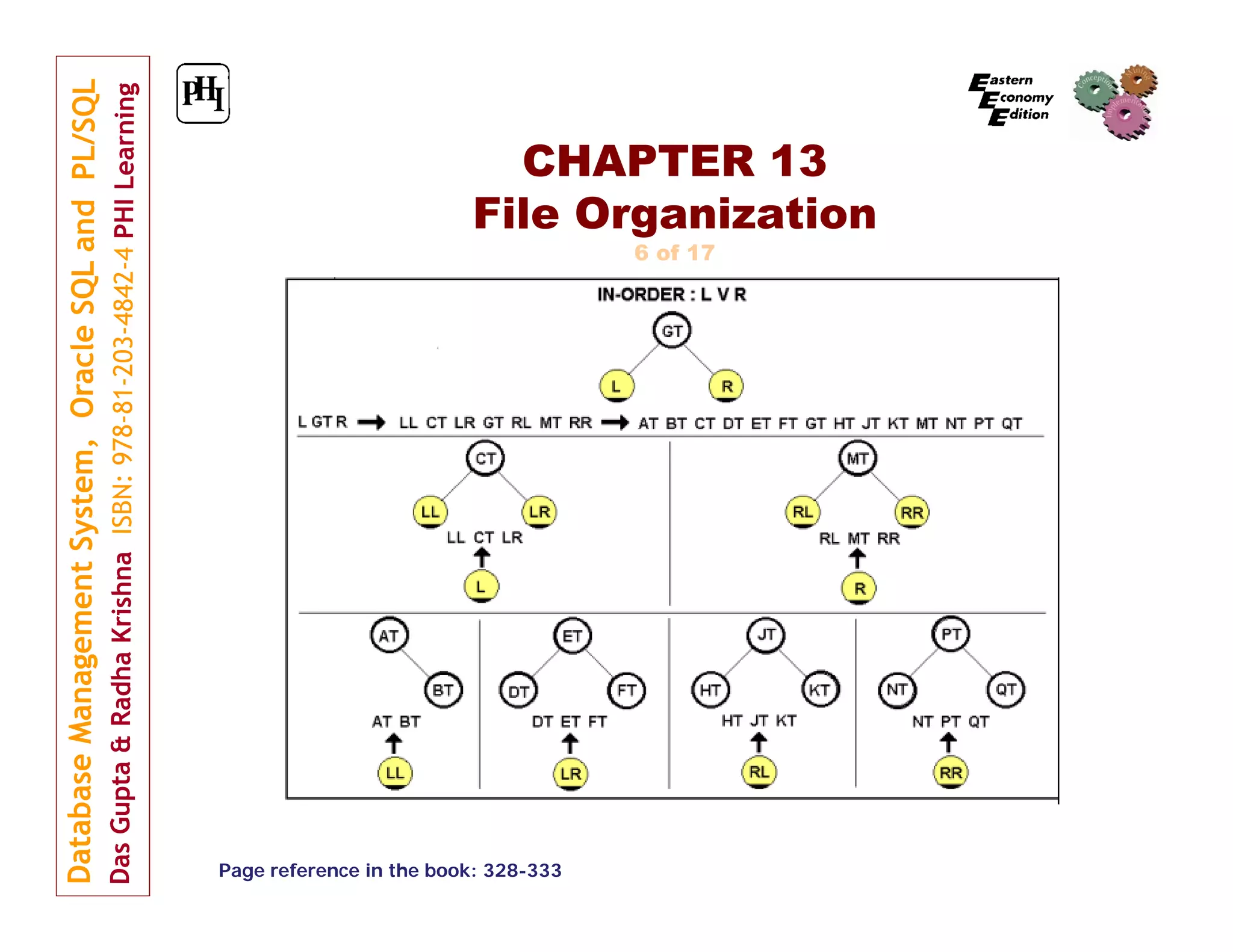
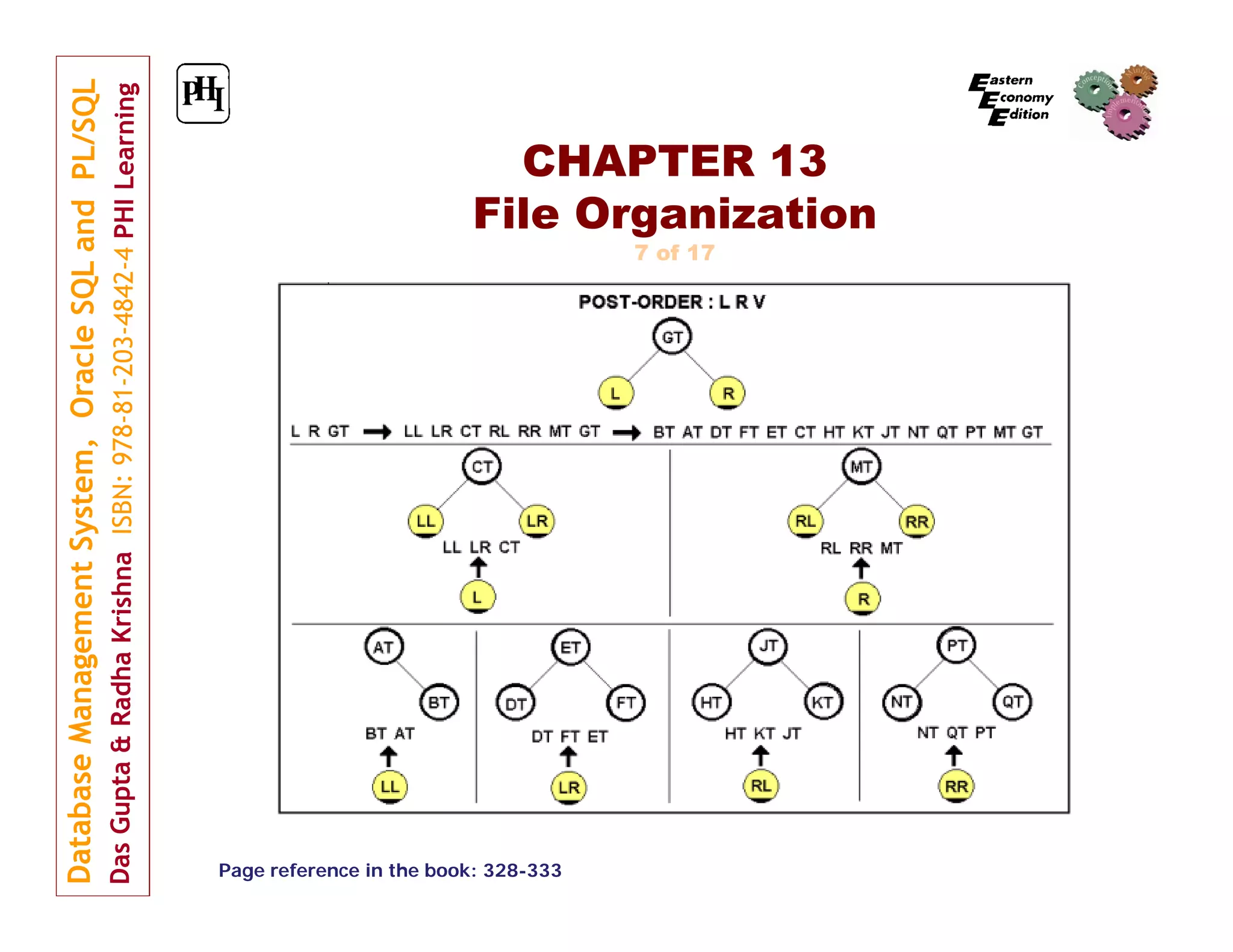

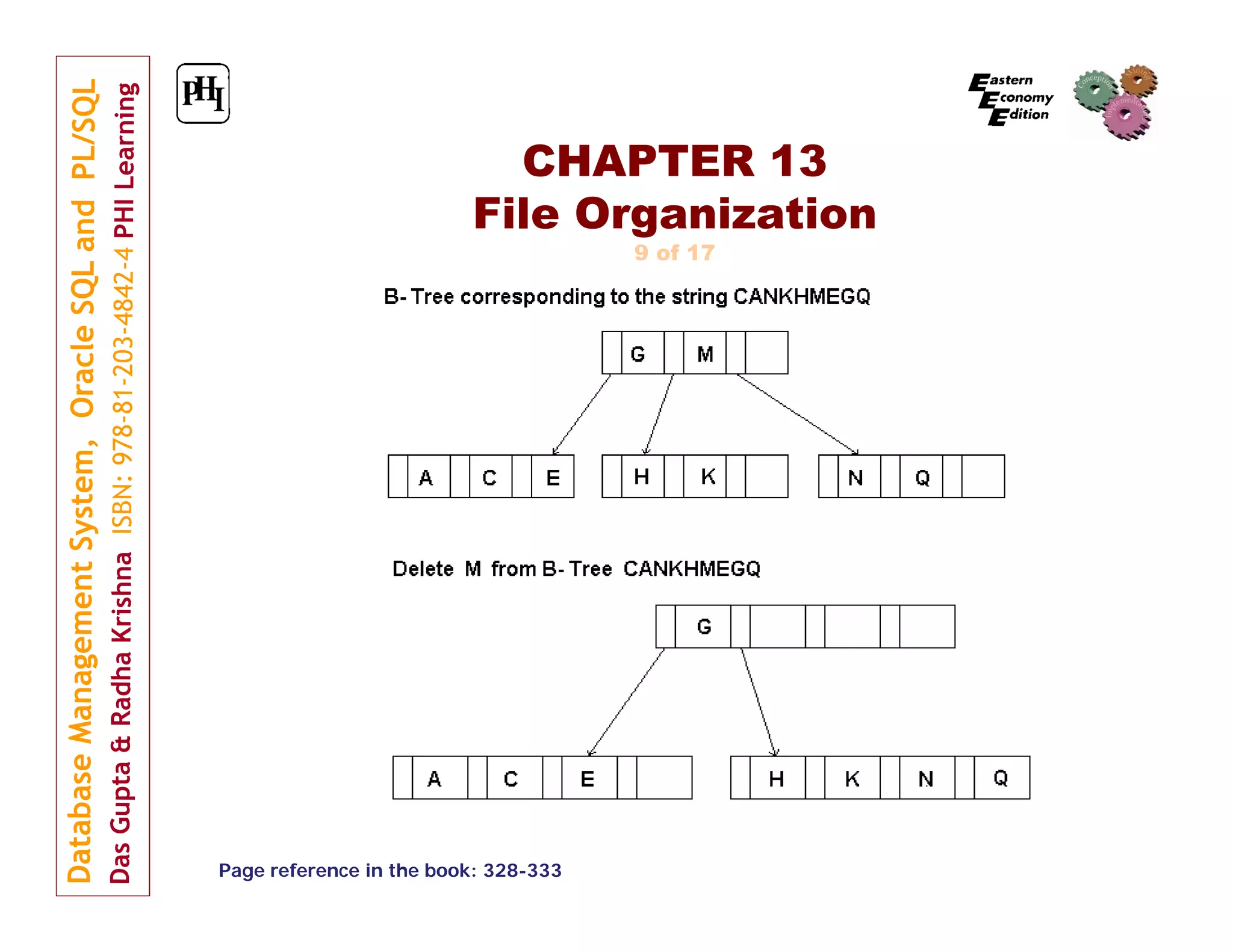

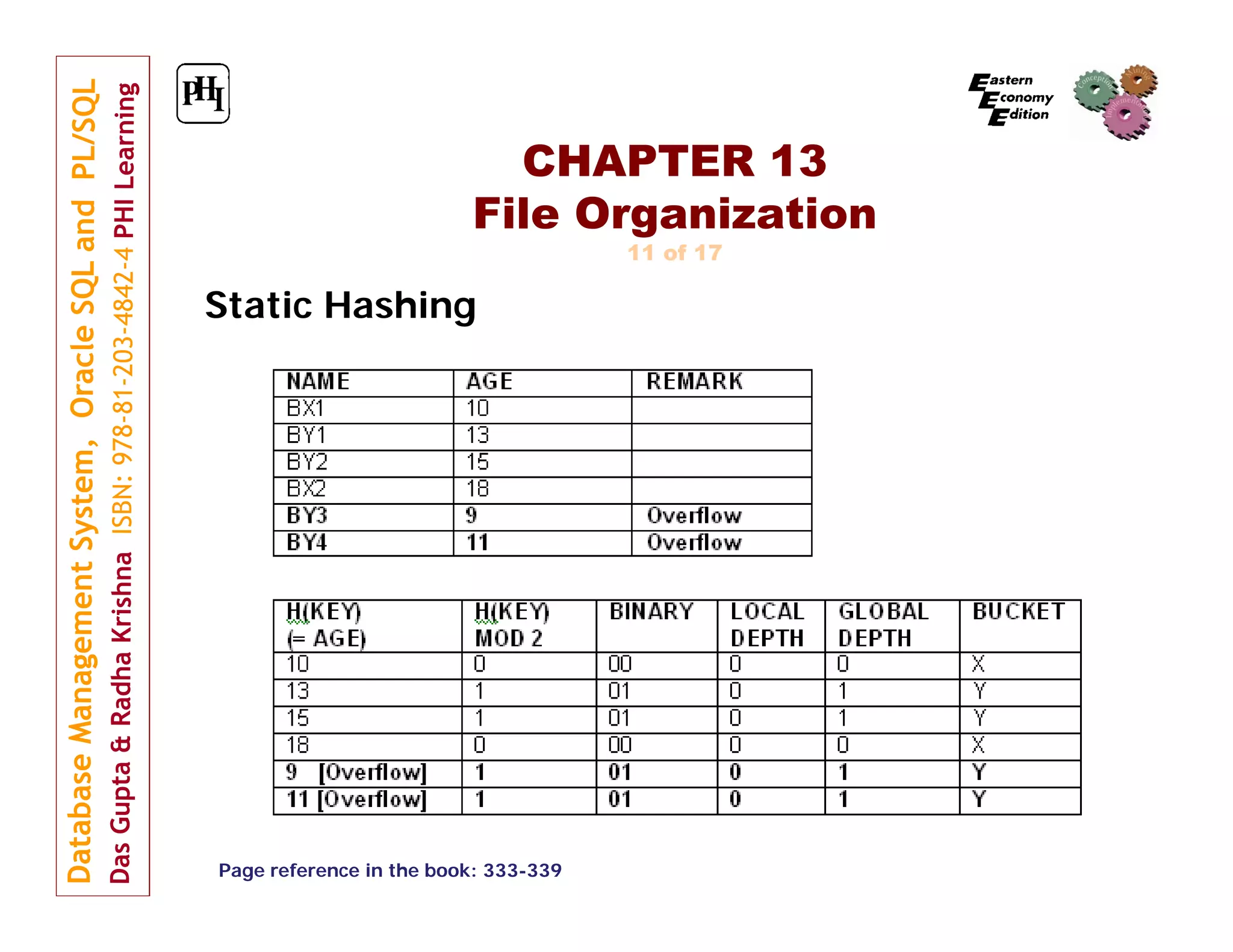
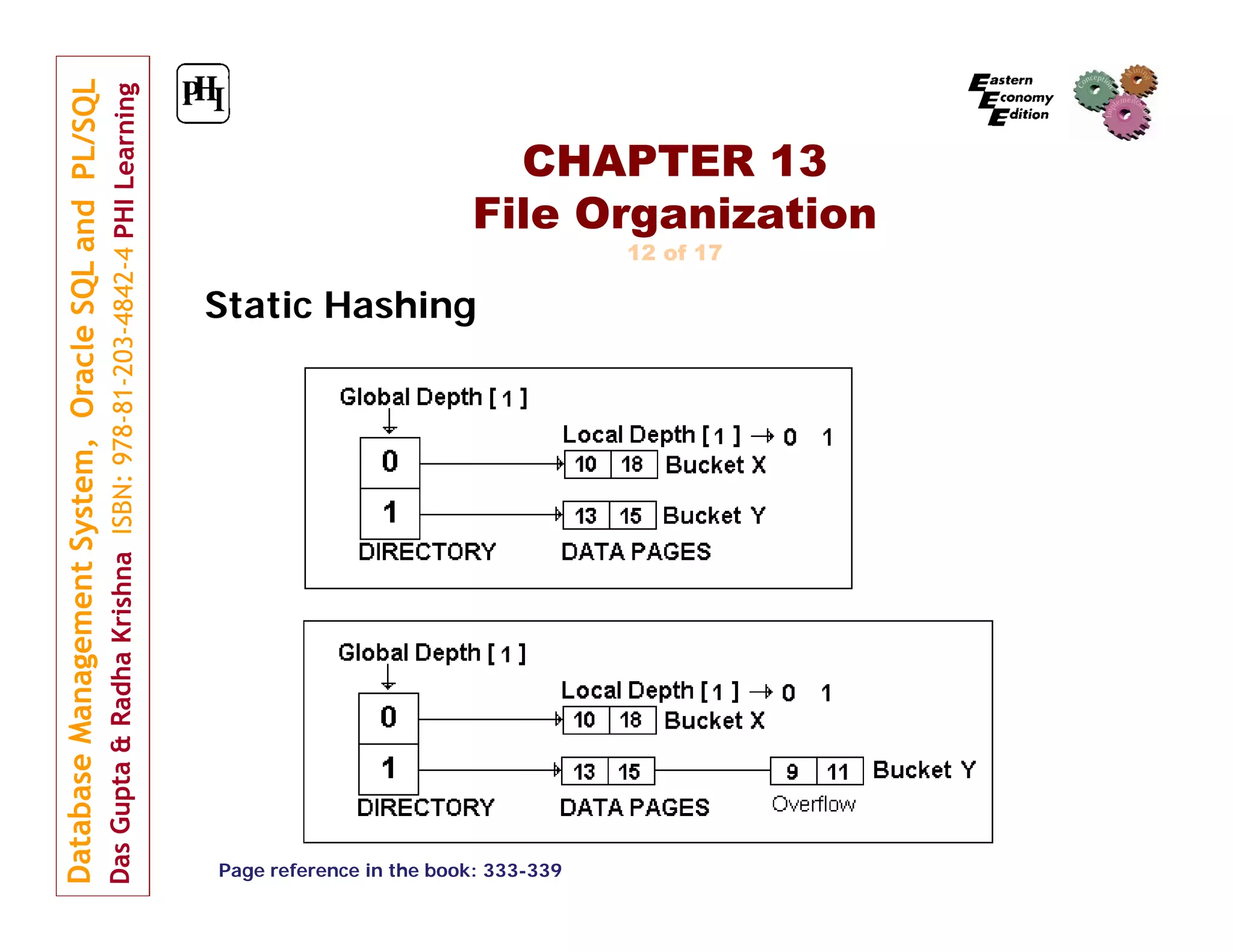
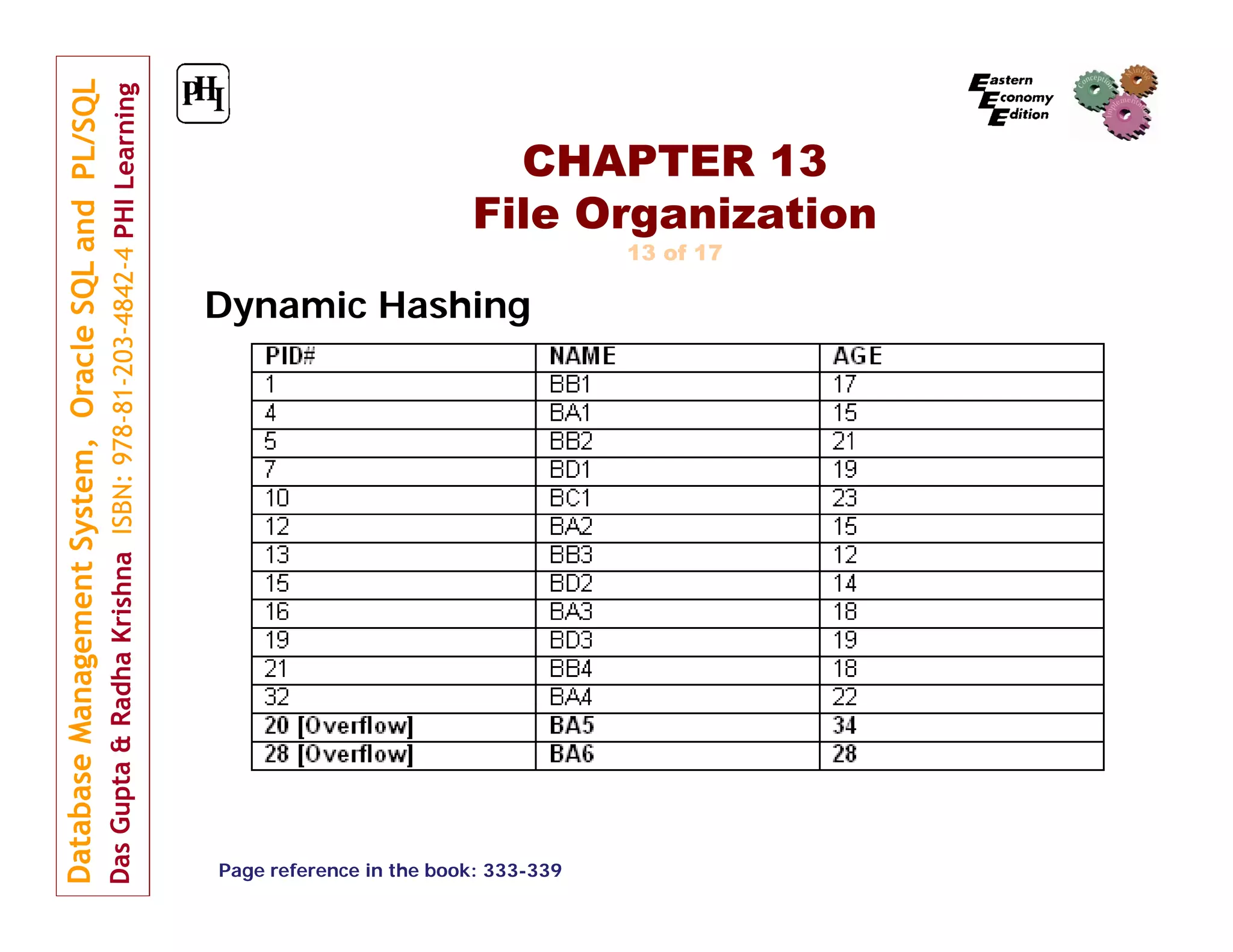
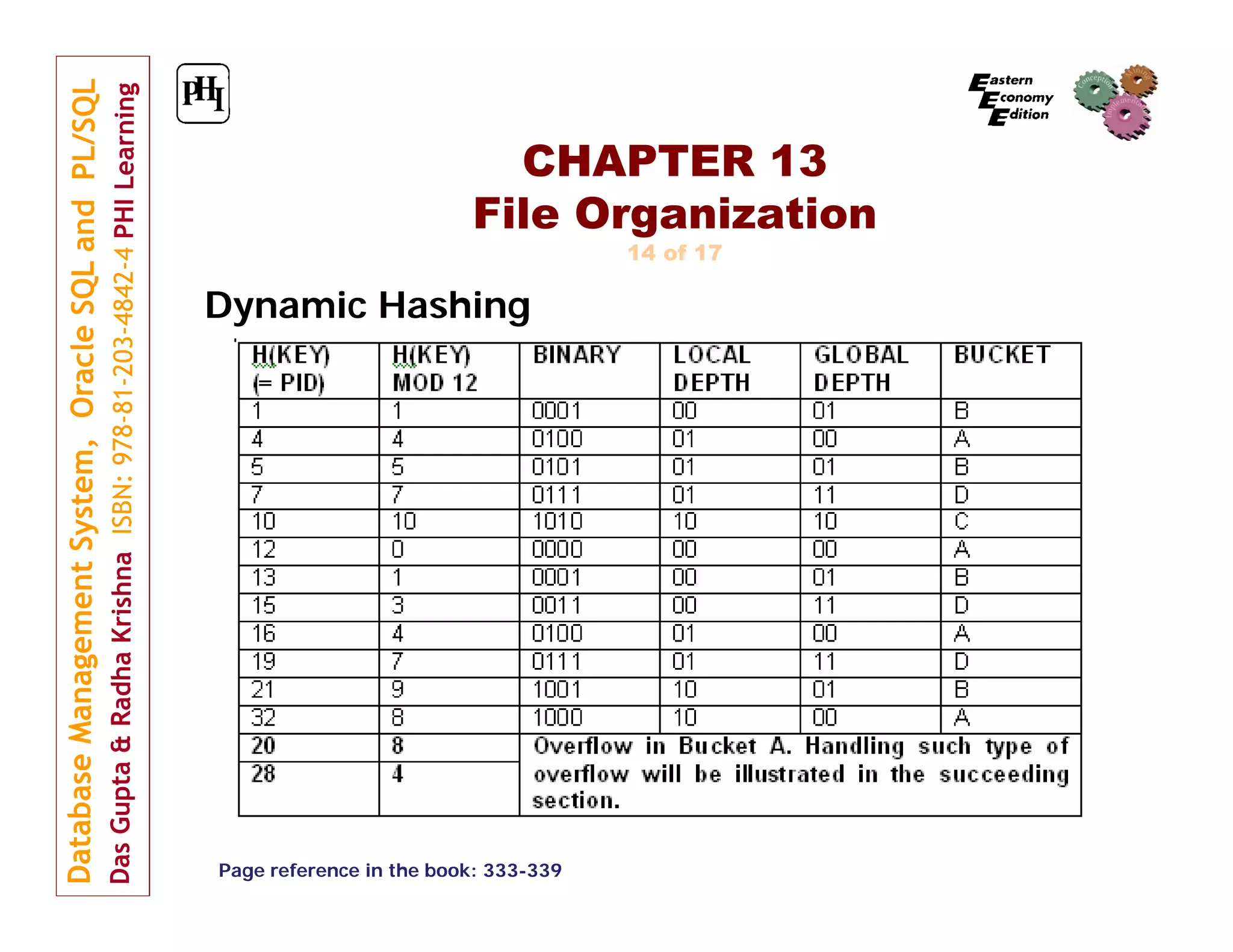
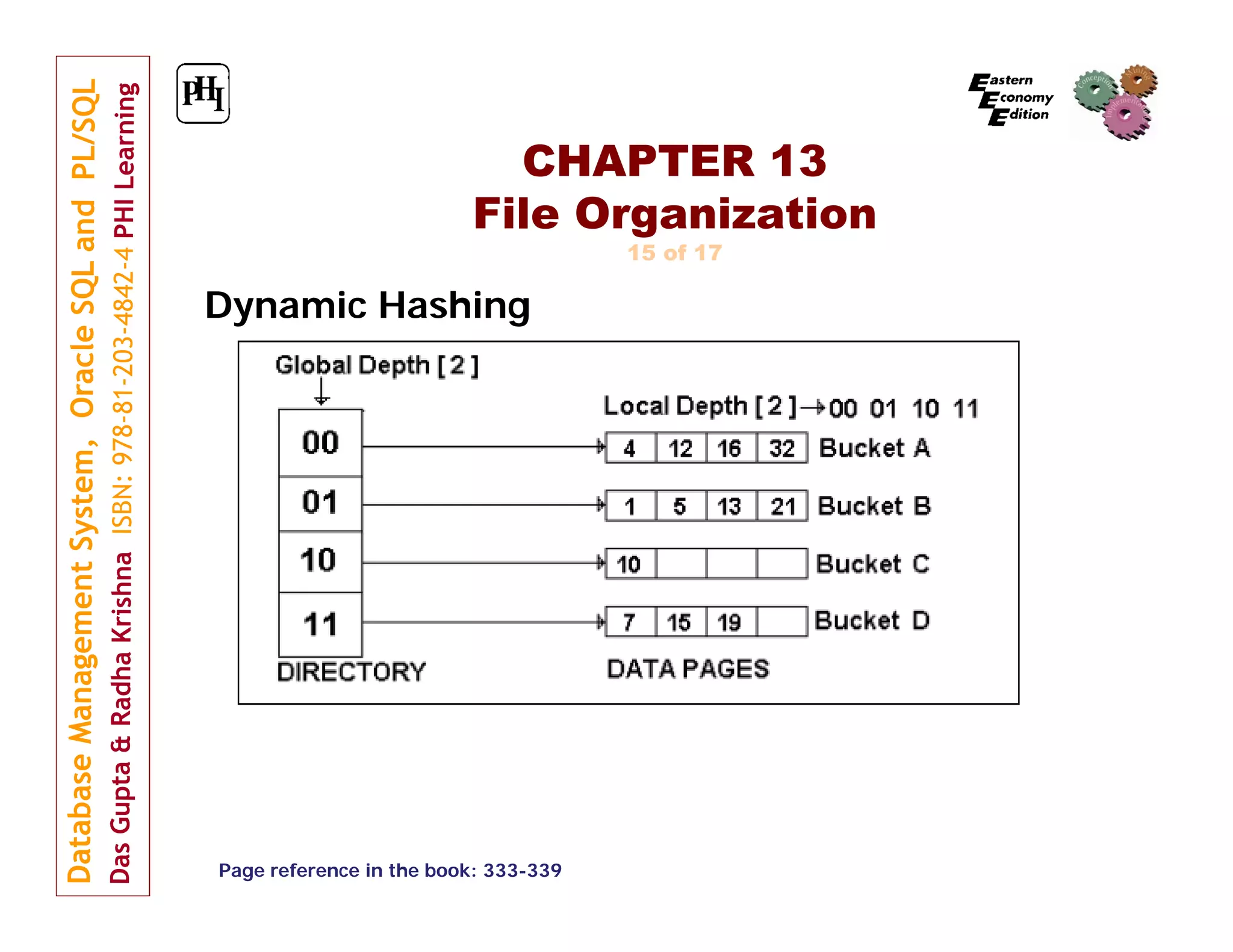
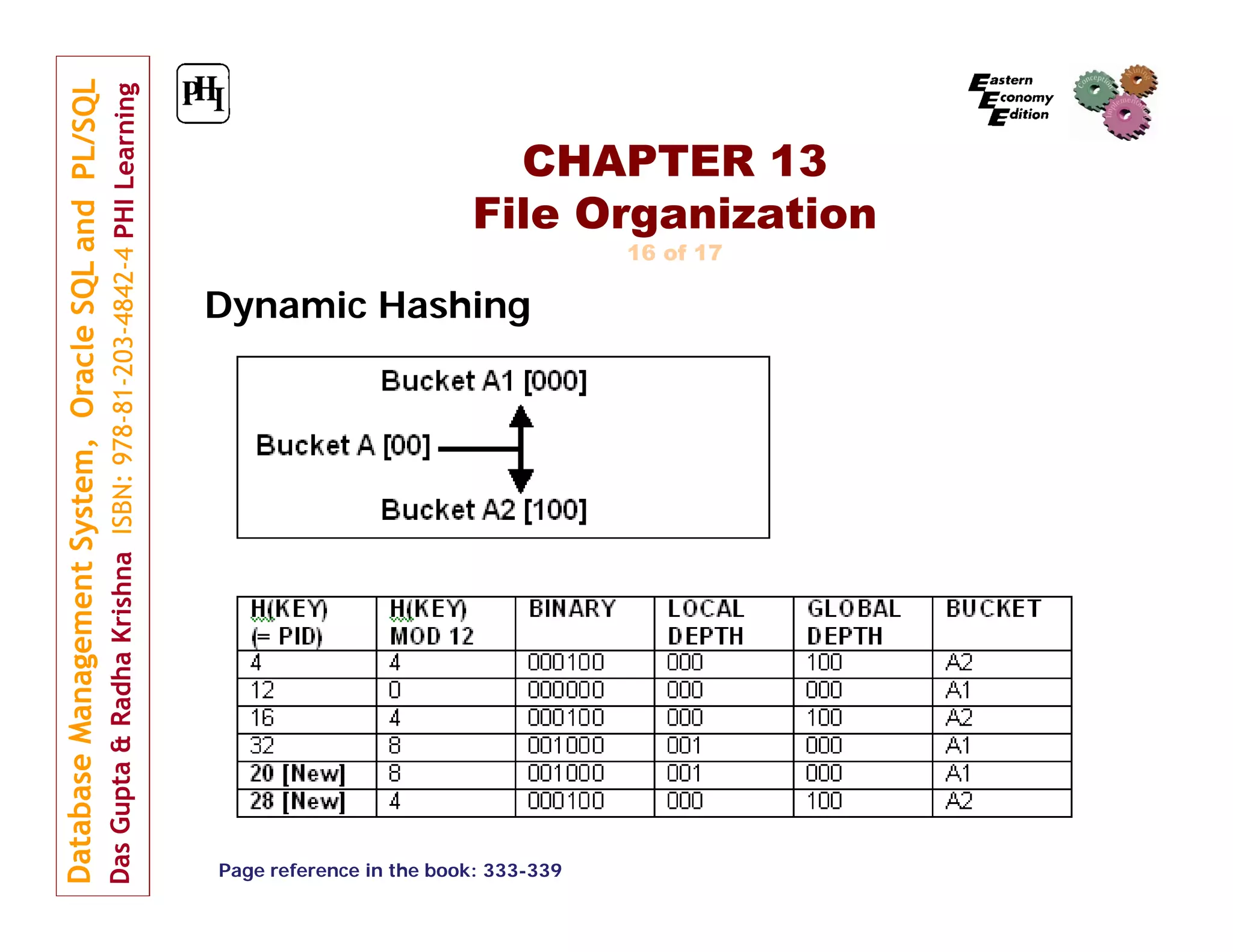
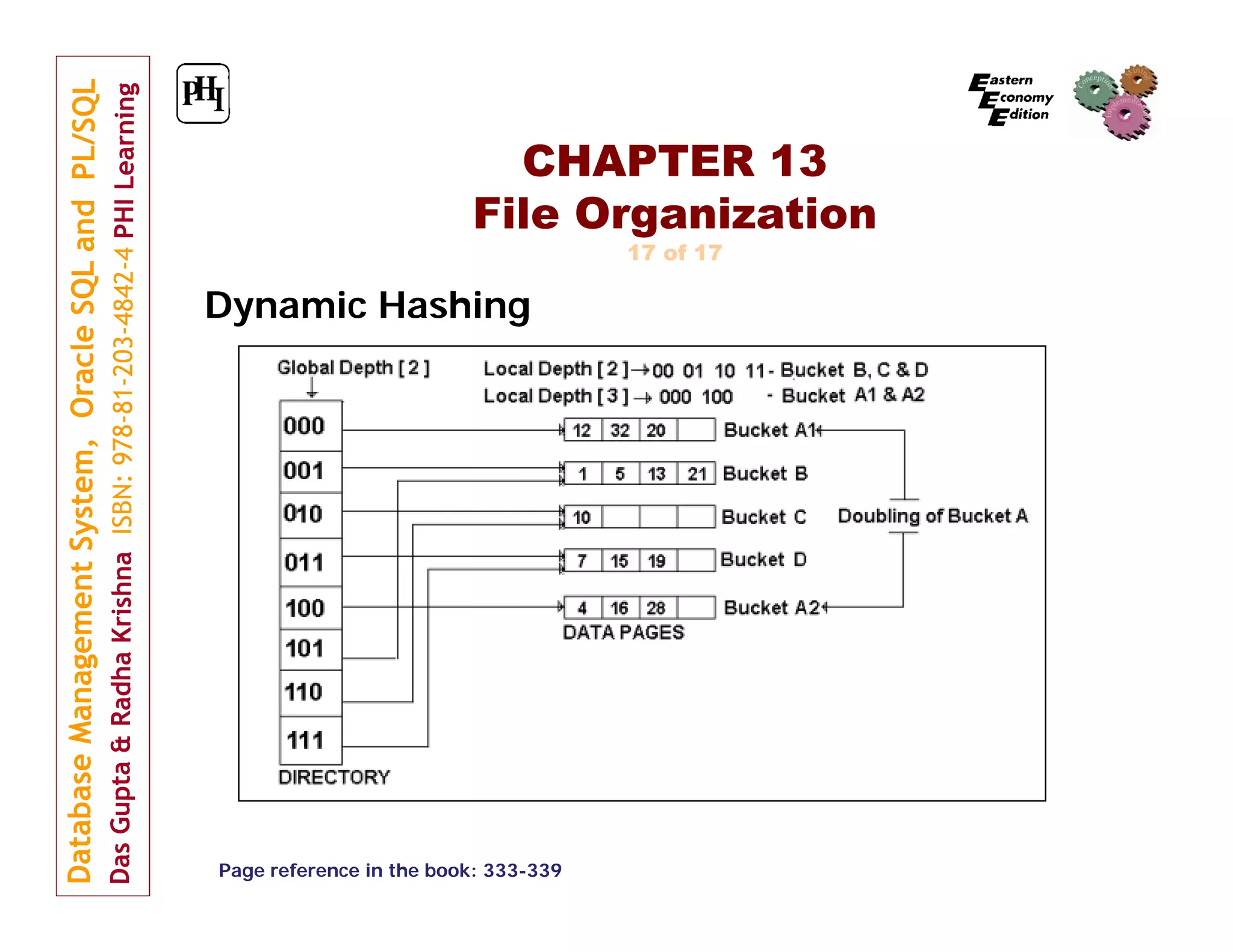

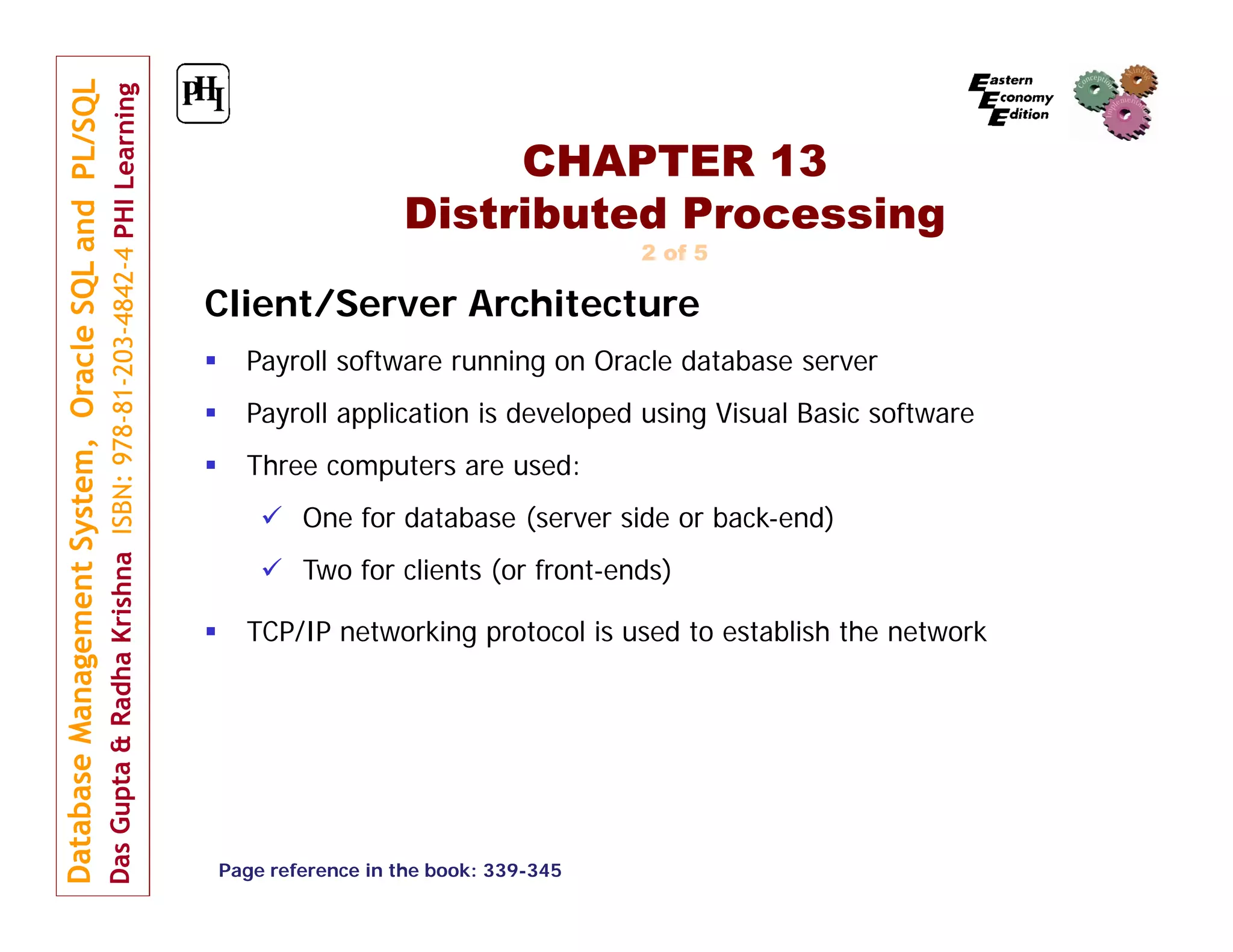

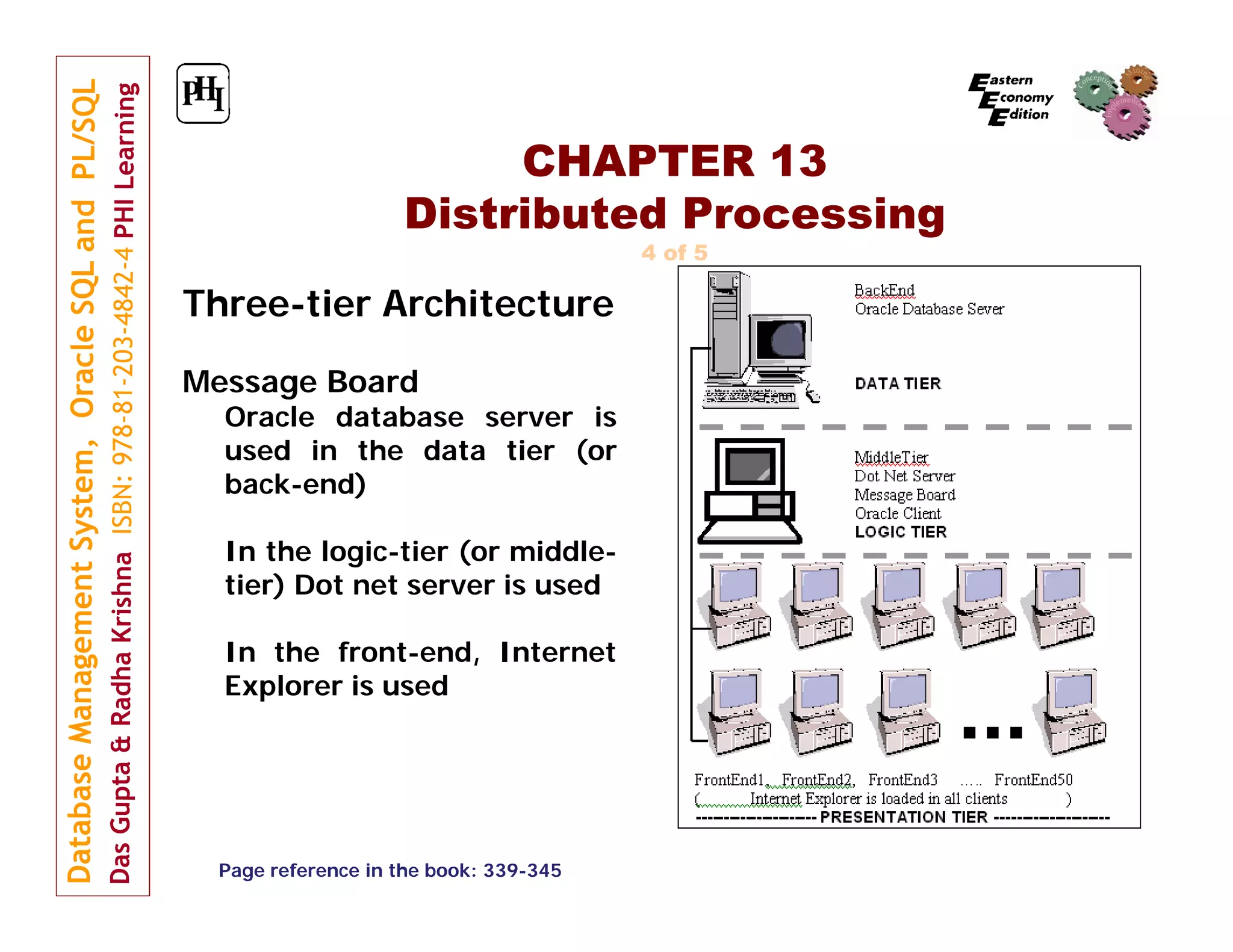
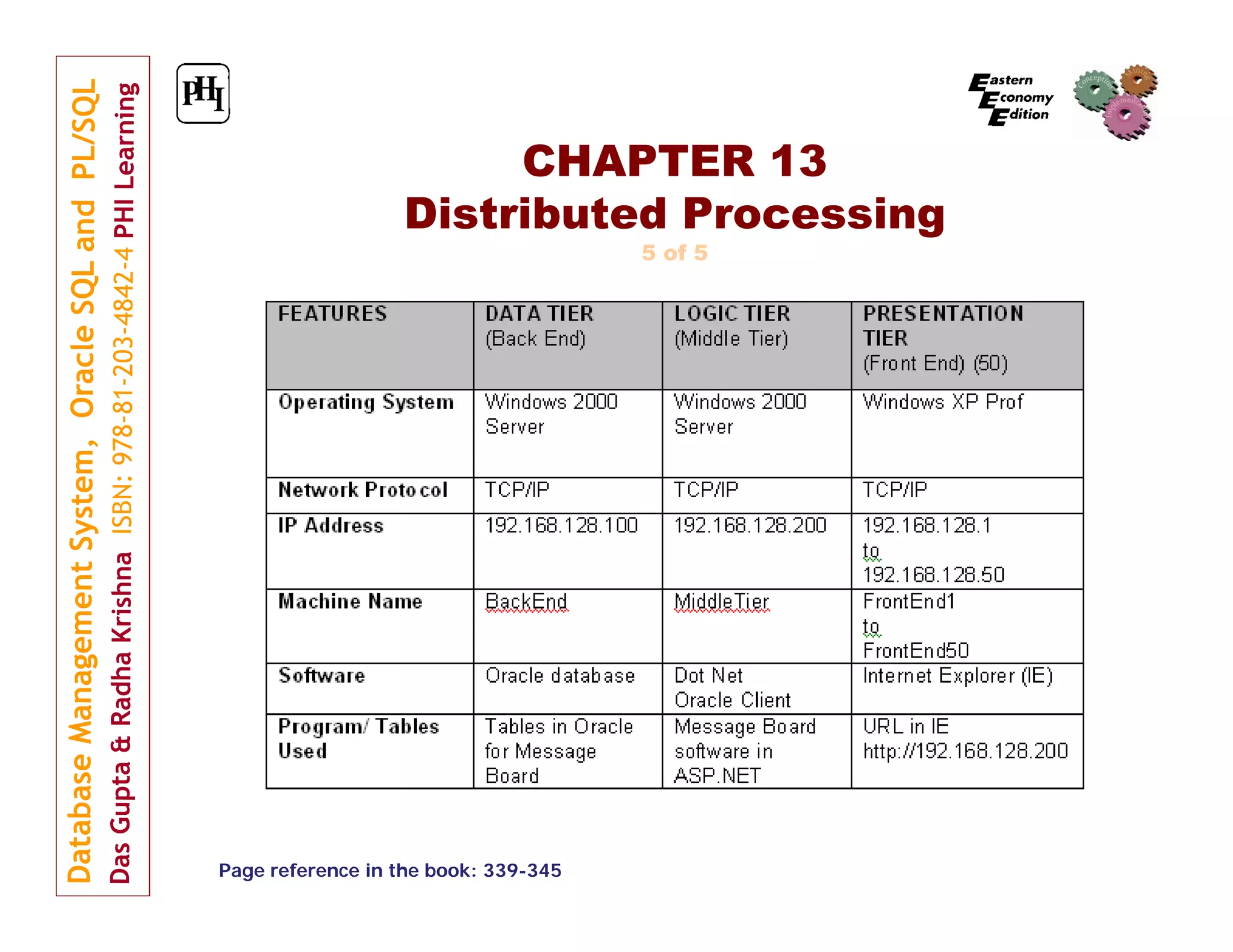
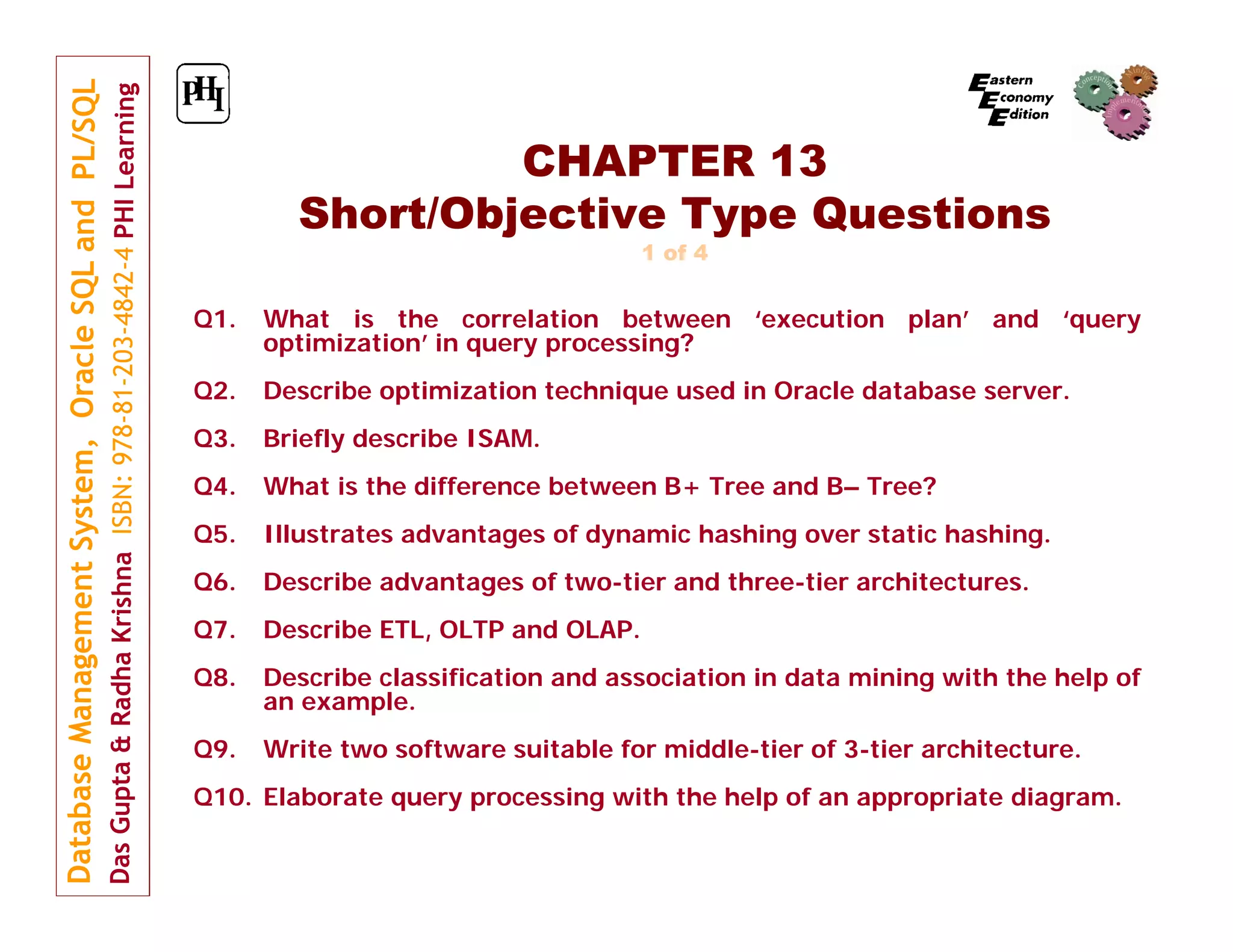
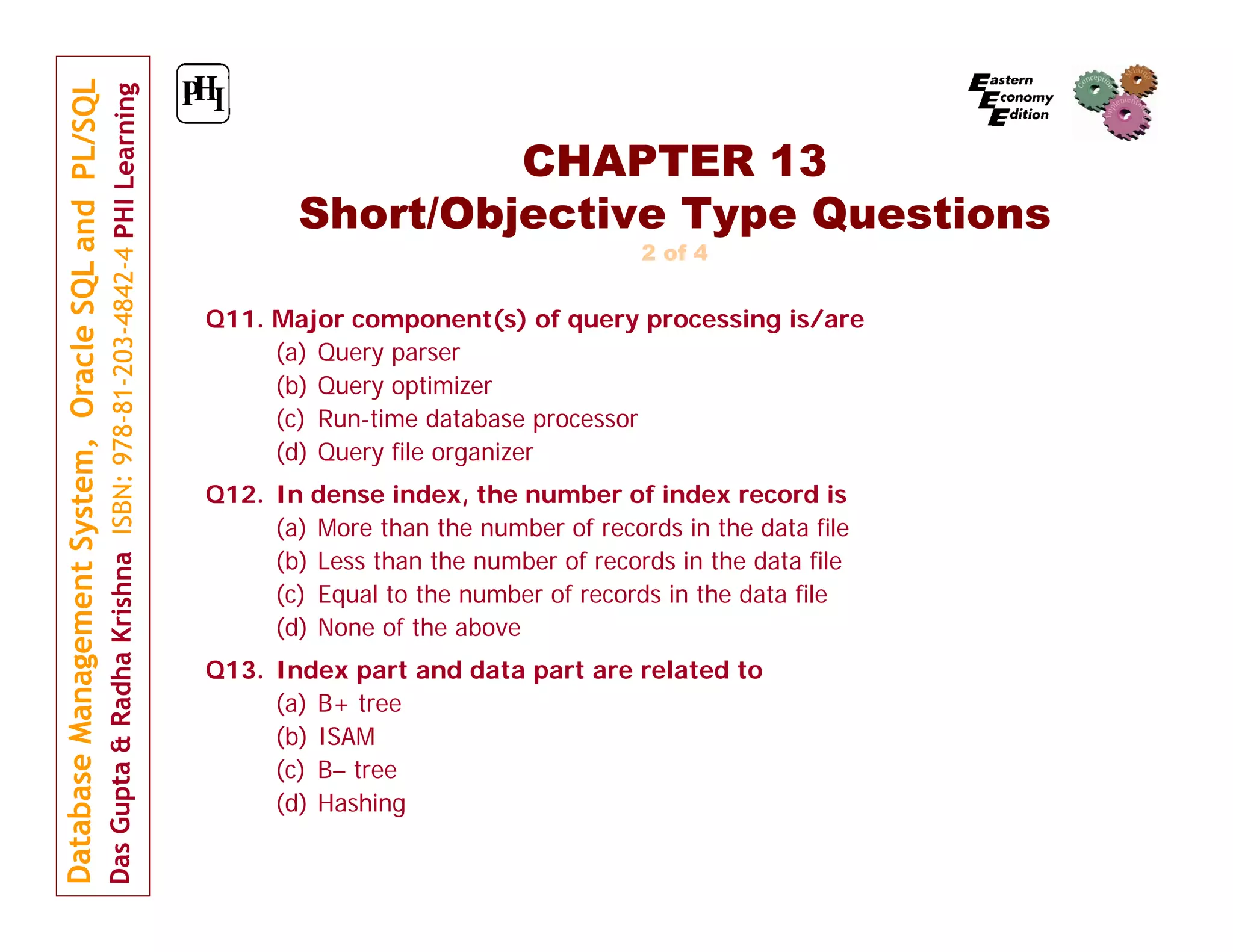
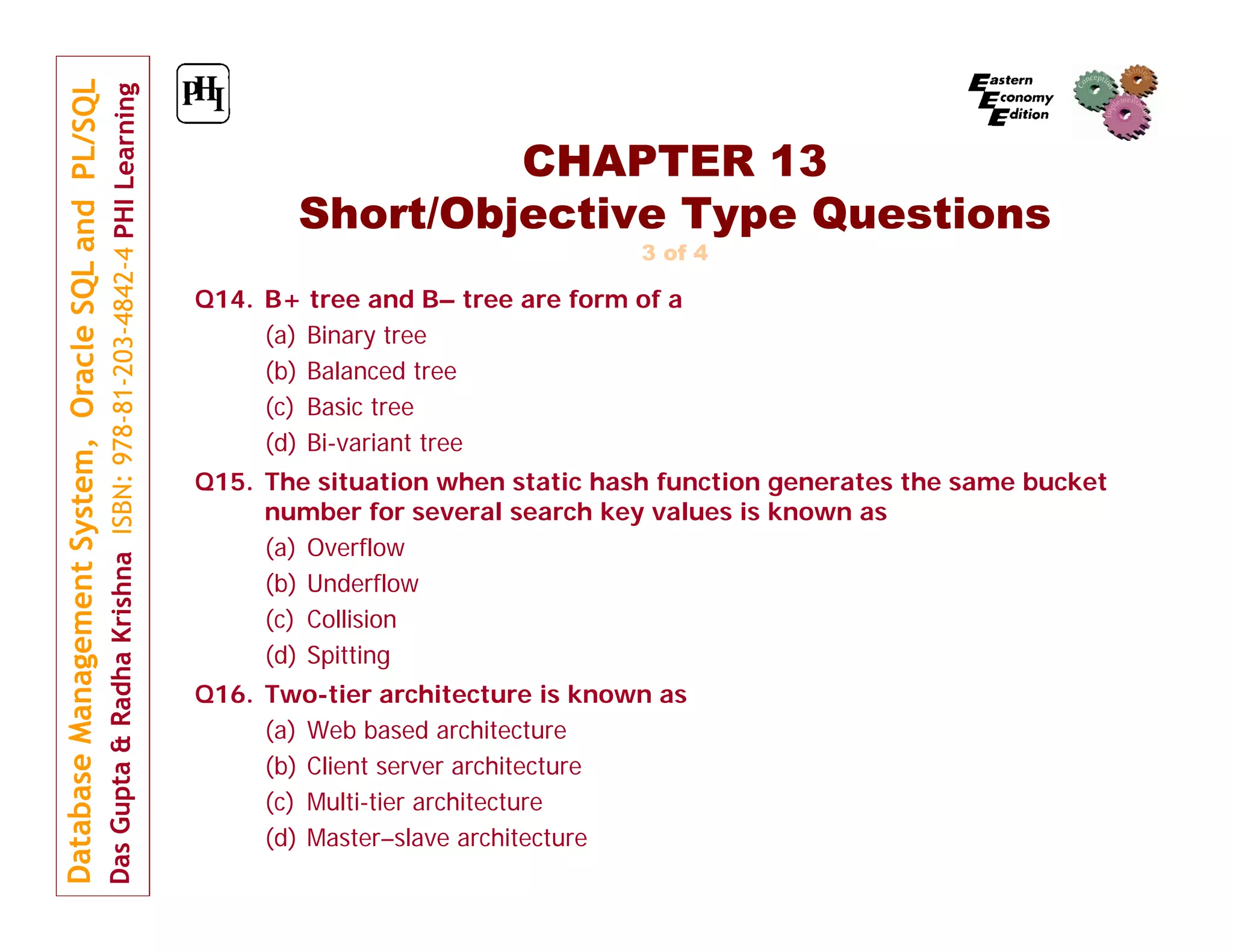
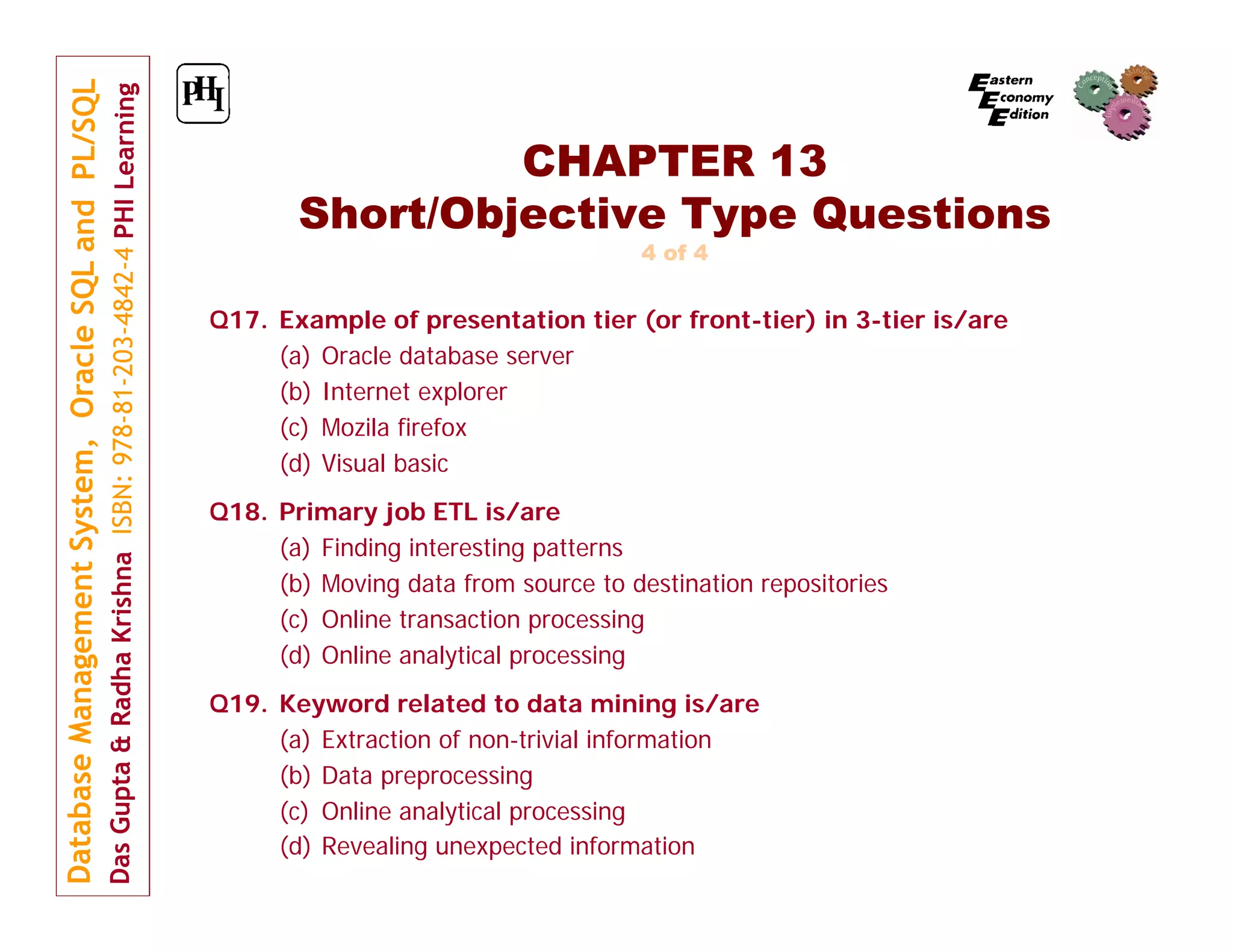

![DATABASE MANAGEMENT SYSTEM ORACLE SQL AND PL/SQL PART III : Advanced Concepts & Technologies Periods Proposed – 12 to 18 Chapter 13 Query Processing, File Organization & Distributed Processing 2-3 Periods [Theory] Chapter 14 Transaction Processing, Concurrency Control, Oracle Architecture, Backup & Recovery 2-3 Periods [Theory] Chapter 15 Data Warehousing 2-3 Period [Theory] Chapter 16 Online Analytical Processing and Materialized Views 2-3 Period [Theory] Chapter 17 Data Mining Overview 2-3 Period [Theory] Chapter 18 Data Mining techniques 2-3 Period [Theory]](https://image.slidesharecdn.com/databasemanagementsystemchapter13-131124025502-phpapp02/75/Database-management-system-chapter13-33-2048.jpg)
